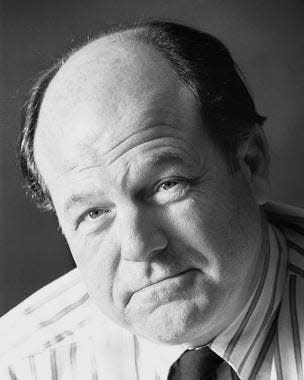As It Were: Cultural Arts Center in Columbus has long history as state armory
It's a quaint little brick building with octagonal brick towers rising from all four corners of the structure – itself surrounded by a brick wall as tall as a person peering over. It resembles a fort in the middle of a downtown.
And it is just that.
Seated along the Scioto River and surrounded by high-rise, high-rent structures, this seems to be a little out of place. It isn't. This building was here long before the high-risers and probably will be here long after they're gone. It's a place worth remembering.

It was built to be a fortress in a place where it would be remembered, and the previous use of the land forgotten. That would not happen, but the effort says something good about the attempt.
This parcel immediately south of the middle of town in 1812 was called the “Plum Field.” It was here in 1813 that the first building in Columbus was built. It was a prison and housed the men who would help complete the first Statehouse and other nearby buildings.
The plum trees were cleared as the prison was expanded by movements of fence down the hill leading to the river. In time, the prison created to hold a few dozen men eventually held several hundred. Some escaped from the loosely guarded place. Most did not and served out their time helping to build the city.
As It Were: Columbus enjoyed growth spurt in early 1850s
But then the National Road came to town. Begun in 1811 in Frederick, Maryland, the road had marched across America – 60 feet wide with a gravel base and stone bridges – across rivers and streams. In 1831, the road arrived along Main Street in Columbus and seemed set to leave town on the same road. Impressed by the arrival, the Ohio General Assembly decided that perhaps it was time to move the penitentiary to the country. The site chosen was just that at the corner of what is Spring and Dennison avenues. The penitentiary went there in 1832.
The National Road, by the way, did not leave town on Main Street. Inveigled by local merchants hungry for business, the National Road turned right on High Street, marched north and left town on a new Broad Street bridge.
The site of the previous penitentiary was reverted to the state after several lawsuits.
Central Ohio had been the home of various militia companies since the area began to be settled after the American Revolution. Some of the companies were mounted and even made modest attempts at similarity of clothing.
But there was no state arsenal in Columbus until 1859. In that year, the Ohio General Assembly – after considerable and lengthy lobbying by militia companies – approved the funding of construction of a state armory on the old penitentiary site. The contract went to George Gibson.
It was a wise choice on the part of the state. Gibson was born in Columbus in 1827 and learned his trade as a building contactor in the service of Joel Searles, a man characterized in a later newspaper account as “one of the most famous pioneer builders of Columbus.”
Gibson proved himself to be a worthy successor to Searles. Over a long career, he built the original Union Station, the original YMCA building and several business blocks. He also constructed the Second Presbyterian Church on Third Street and for many years had the contract for all the woodwork in the Statehouse.
The arsenal Gibson had built for the state was a formidable brick structure immediately adjacent to the place where the Columbus feeder of the Ohio and Erie Canal entered the Scioto River. It was later described in some detail in its successful nomination to the National Register of Historic Places:
“The interior was designed for the storage of arms of various types. The first-floor gun room is 60 feet square, and the armorer’s room and office are each twenty feet square. Larger heavier weapons were stored on the first level. The second floor is all open space and column-free. The ceiling is 20 feet high. Fixtures were installed for the storage of rifles and handguns.”
The arsenal served the needs of militia companies and the later requirements of the Ohio National Guard for more than 100 years. Eventually superseded by newer and more modern structures, the Ohio State Arsenal was leased by Gov. James Rhodes in 1978 to the city of Columbus for 99 years at $1 per year.
Extensively remodeled as a pet project of Columbus Recreation and Parks Department director Mel Dodge, the old arsenal became the Cultural Arts Center. But its military heritage has been remembered, as well. The figurehead of the pre-dreadnought battleship Ohio adorns a corner of the front wall, and in the courtyard is the bell from the guided missile cruiser Columbus.
It is a classic structure in contemporary use along the Scioto Mile.
Local historian and author Ed Lentz writes the As It Were column for ThisWeek Community News and The Columbus Dispatch.
This article originally appeared on ThisWeek: As It Were: Cultural Arts Center has long history as state armory
